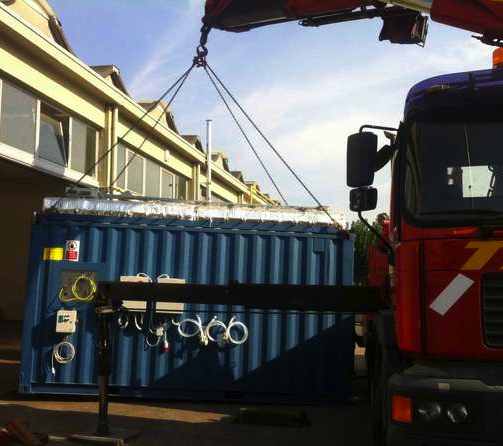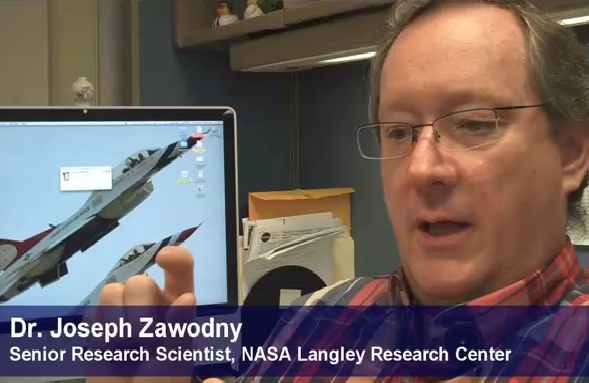 After twice conducting four days of continuous measurement on a controversial energy unit, a group of independent scientists reportedly confirmed the existence of unexplained energy production via a process formerly known as “cold fusion” but now named LENR for Low-Energy Nuclear Reaction.
After twice conducting four days of continuous measurement on a controversial energy unit, a group of independent scientists reportedly confirmed the existence of unexplained energy production via a process formerly known as “cold fusion” but now named LENR for Low-Energy Nuclear Reaction.
In simple terms, the E-Cat devices (Energy Catalyzers) are similar to nuclear reactors but without any radioactivity or hazardous waste, and according to a top NASA scientist, could literally solve our twin problems of climate and energy.
Five Swedish researchers from Uppsala and Stockholm, and two from Italy authored the report, available since May 16 on the website for a technical journal, Arxiv. The goal of the Swedish funded research was to independently test the device by Italian inventor Andrea Rossi under controlled conditions using high precision measuring instruments.
“We do not draw any conclusions, but we point out that the test gives an abnormal heat that is far beyond that possible with chemical reactions,” says Bo Höistad, emeritus professor of nuclear physics and the representative of the group.
The net energy released by the E-Cat in one test was 5.6 times greater than the electrical energy input, which the apparatus requires. After weighing the fuel and the measurement of reactor interior space, they acknowledge that the energy density is far greater than for any chemical reaction or any known method for storing energy, according to the Swedish report, NyTeknik, in an English translation.
 The reactors were loaded with hydrogen, a few grams of nickel powder and a number of secret (non-uranium) additives. They used outside electricity to bring the resistive heater up to a temperature whereby the reaction could take place.
The reactors were loaded with hydrogen, a few grams of nickel powder and a number of secret (non-uranium) additives. They used outside electricity to bring the resistive heater up to a temperature whereby the reaction could take place.
“Enormous progress in the last 7-8 months”
Meanwhile, updates on Rossi’s progress getting his invention to commercial customers was provided in a May 7 live 90-minute interview by Pure Energy Systems Now (PESN.com). The website’s author, Sterling D. Allan, said afterward, “Things have been progressing … more slowly than we had hoped… (But) I came away from the interview even more convinced that the E-Cat technology is real and poised to eventually revolutionize the energy scene, not to mention science and the economy, while helping to clean up the planet.”
Rossi’s team — which early on included Sergio Focardi whose work on nickel hydrogen reactions proved invaluable — delivered on April 30 to a non-military U.S. customer a shipping container housing one of their 1MW energy plants, consisting of 106 mounted E-Cats. Along with two other prototypes, the shipment is en route to the US and due to arrive any day. After a about a month in their facility, the customer expects to be “selling heat made by the plant.”
A separate unit built for a military customer was shipped earlier, and has now logged “many thousands of hours” of run time, according to Rossi. He said the data from this plant easily corroborates the guaranteed coefficient of performance as 6 (six times more energy output than what was needed to make it run).
Safety is the primary reason why the home or domestic E-Cat is presently on hold. “The certification and safety agencies that need to sign off on something like this require extensive testing before they will approve of it to be made available to the general public,” commented Mr. Allen.
Until now the US government has refused to acknowledge LENR work as “real” science. However, researchers at NASA Langley Research Center are currently researching this energy source, created using nickel, carbon and hydrogen. Senior Scientist Joseph Zawodny explains in a video how he believes LENR can be adapted for use in every home starting with the replacement of your water heater.
NASA’s Glenn Research Center in Ohio has also confirmed the LENR effect and had internal discussions and presentations on how to develop the phenomenon. In an interview with EV World, chief scientist at the Langley Center, Dennis Bushnell, commented favorably on LENR in general, and the Rossi eCat in particular.
“The most interesting and promising at this point — farther term, but maybe not so far — is Low Energy Nuclear Reactions. This has come out of twenty years of people producing energy but not knowing what it is and we think we have a theory on it. It’s producing beta decay and heat without radiation. The research on this is very promising and it alone, if it comes to pass, would literally solve both climate and energy.”
Rossi’s latest testing shows the units consuming only 1 gram of Nickel for every 23 gigawatt-hours of heat they produce — that’s 23,000,000 Watt-hours of power. Currently, Allen says, 1.25 grams of nickel (the size of a US nickel) can output the same energy as five barrels of oil.
There is also a hotter running prototype being developed by Rossi called the “Hot-Cat”. The Hot-Cat runs at 350ºC and yet is said to be “very stable.” At this temperature, Rossi said that creating electricity will be easy.
He also confirmed that the European-based Siemens corporation is still working on generating electricity with Rossi’s private company Leonardo Corporation, based in Bologna and Florida.






















[…] of a golden age goodnewsnetwork.org She predicted, a new energy source will be created and global hunger will start to be eradicated […]
[…] Just Confirmed: New Energy Source Could Power the World With Clean Efficient Fusion […]